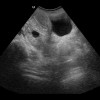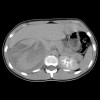
 IJCP Editorial Team
IJCP Editorial Team
Neonatal Pain Response to Various Heel Prick Devices
A recent study aimed to compare the pain response in neonates undergoing a heel prick procedure using three different devices – an automatic lancet, a manual lancet, and a 26-gauge hypodermic needle.
The study included 180 clinically stable neonates with gestational ages greater than 28 weeks and birth weights above 800 grams. The primary outcome measured was the Premature Infant Pain Profile-Revised (PIPP-R) score, while secondary outcomes included cerebral oxygen saturation (CrSO2) and related parameters, cry duration, and the number of pricks and squeezes required.
The results indicated that there was no significant difference in the premature infant pain profile-revised (PIPP-R)scores among the three groups. Post-intervention CrSO2, ΔCrSO2, and the number of pricks were also similar. However, the needle group required more time for CrSO2 to normalize and a greaternumber of squeezes.
In summary, all three devices induced similar pain responses during heel prick procedures in neonates. However, the needle group required more time for CrSO2 normalization and more squeezes. Further research is needed to compare different devices for heel pricks, considering long-term neurological outcomes.
Source: Devi R, Priyadarshi M, Singh P, Chaurasia S, Basu S. Indian Pediatrics. 2023 Jun 21:S097475591600559-.

IJCP Editorial Team
Comprising seasoned professionals and experts from the medical field, the IJCP editorial team is dedicated to delivering timely and accurate content and thriving to provide attention-grabbing information for the readers. What sets them apart are their diverse expertise, spanning academia, research, and clinical practice, and their dedication to upholding the highest standards of quality and integrity. With a wealth of experience and a commitment to excellence, the IJCP editorial team strives to provide valuable perspectives, the latest trends, and in-depth analyses across various medical domains, all in a way that keeps you interested and engaged.




















Please login to comment on this article